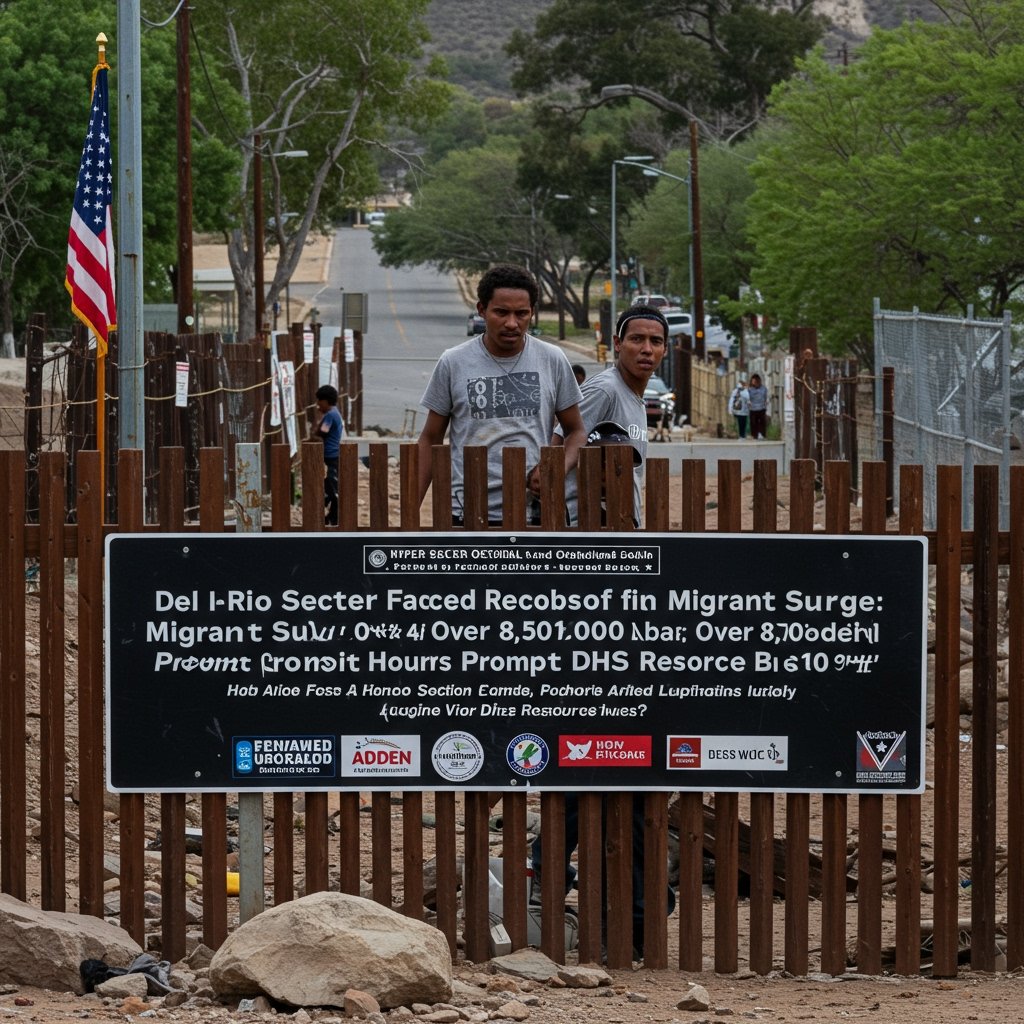Del Rio Sector Sees Unprecedented Migrant Influx
The U.S. Customs and Border Protection (CBP) has reported an alarming and unprecedented surge in migrant encounters within the Del Rio Sector over the recent weekend, underscoring the persistent and escalating challenges along the nation’s southern border. Figures released indicate a record-breaking number of apprehensions, with over 8,500 individuals encountered by Border Patrol agents in the Del Rio Sector in the last 48 hours alone. This dramatic increase represents a significant peak, placing immense pressure on already stretched resources in this critical region of southwest Texas.
The Del Rio Sector, known for its vast, rugged terrain and significant riverine border along the Rio Grande, has frequently experienced high levels of migrant activity. However, the scale of the recent influx is described by officials as surpassing previous peaks, leading to a crisis point in managing arrivals, processing asylum claims, and coordinating humanitarian needs. The rapid succession of encounters has overwhelmed local infrastructure, including non-governmental organizations providing aid, municipal services, and state law enforcement assisting federal efforts. Simultaneously, it is straining federal processing capabilities, from initial intake and identification to transportation and placement within the immigration court system or removal proceedings.
Department of Homeland Security Deploys Additional Personnel
In direct response to the escalating situation and the urgent need for increased capacity, the Department of Homeland Security (DHS) announced immediate actions to bolster the federal presence and operational tempo in the Del Rio Sector. DHS Secretary Alejandro Mayorkas confirmed the administration’s commitment to addressing the surge by authorizing the swift deployment of 500 additional Border Patrol agents and support personnel to the sector. This deployment is intended to provide crucial operational support, enhance processing efficiency, and reinforce enforcement measures along the border.
Secretary Mayorkas’s statement emphasized that the administration is prioritizing swift processing for individuals encountered at the border. This often involves rapidly assessing eligibility for asylum or other forms of relief under Title 8 immigration laws, or initiating expedited removal proceedings for those deemed ineligible. Concurrently, the Secretary highlighted a focus on increased enforcement measures, signaling a potential ramp-up in efforts to deter illegal crossings and address smuggling activities. The deployment of additional personnel is a tangible step aimed at enabling Border Patrol to better manage the large volume of arrivals while maintaining border security operations.
Impact on Local Resources and Calls for Sustainable Solutions
The overwhelming number of encounters has had a profound impact on the local communities surrounding the Del Rio Sector. Shelters and aid organizations, many already operating at or near capacity, are struggling to provide temporary housing, food, medical assistance, and transportation support to the thousands of individuals being processed or released into the interior. Local law enforcement agencies and municipal governments have also been compelled to divert resources to assist with humanitarian aid, transportation, and maintaining public order.
In light of the sustained pressure, local officials in southwest Texas continue to voice concerns and issue calls for more sustainable federal intervention. While acknowledging the immediate relief provided by the deployment of additional personnel, they argue that temporary surges in staffing are not sufficient to address the long-term, systemic challenges posed by fluctuating migration flows. Their calls for sustainable solutions typically encompass requests for consistent federal funding for local support services, enhanced federal coordination with local authorities, investment in border security infrastructure beyond personnel, and potentially policy changes aimed at managing migration more effectively at its source or through legal pathways.
Broader Context and Future Outlook
The surge in the Del Rio Sector is indicative of the complex and dynamic nature of migration patterns across the southern border. Factors contributing to these fluctuations can include political and economic instability in countries of origin, seasonal changes, the perceived effectiveness of current U.S. immigration policies, and the activities of criminal organizations involved in human smuggling. The significant number of encounters within a concentrated 48-hour period suggests coordinated movements or responses to specific conditions.
The deployment of the 500 additional Border Patrol agents and support personnel by DHS is a critical immediate step but presents its own logistical challenges, including housing and integrating staff into existing operations. The effectiveness of this measure in mitigating the immediate crisis and its impact on overall processing times and enforcement will be closely watched. The situation in the Del Rio Sector remains fluid, highlighting the ongoing need for comprehensive strategies that address both immediate humanitarian and enforcement needs, as well as the root causes of migration and long-term border management challenges. The dialogue between federal authorities and local officials is expected to continue as they navigate this challenging period.






